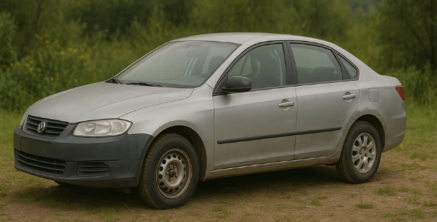
The number of gears in modern lorries varies considerably depending on vehicle size, application, and manufacturer specifications. How many gears does a lorry have? Most contemporary heavy goods vehicles feature between 9 and 18 gears, with 12-speed transmissions being the most common configuration in the UK commercial vehicle market. However, some specialist applications and older vehicles may have different gear counts, ranging from as few as 6 gears in lighter commercial vehicles to as many as 24 gears in certain heavy-duty applications.
Basic Transmission Principles
Heavy goods vehicle transmissions differ significantly from standard car gearboxes due to the enormous torque requirements and varied operating conditions lorries encounter. The transmission must efficiently transfer power from the engine to the wheels whilst providing adequate gear ratios for different load conditions and terrain types.
Key Functions of Lorry Transmissions:
Manual vs Automated Systems
Traditional Manual Transmissions. Conventional manual gearboxes require drivers to operate a clutch pedal and gear lever manually. These systems offer direct driver control but demand significant skill and experience for optimal operation.
Automated Manual Transmissions (AMT). Modern AMT systems combine manual transmission efficiency with automatic operation. The system uses electronic controls to operate the clutch and select gears, reducing driver fatigue whilst maintaining fuel efficiency.
Fully Automatic Transmissions. Traditional torque converter automatics are less common in heavy lorries due to efficiency concerns, though modern designs have improved significantly in recent years.
Common Gear Configurations in Lorries
Lorry transmissions are categorised primarily by weight class, with gear count and configuration varying significantly based on the vehicle’s intended payload and operating conditions. Understanding these different systems helps explain why proper clutch technique becomes increasingly critical as vehicle size and complexity increase.
Light Commercial Vehicles (3.5-7.5 tonnes)
6-Speed Transmissions. Smaller lorries and large vans typically use 6-speed manual transmissions similar to those found in passenger cars, but with stronger internal components to handle increased torque loads.
Typical Applications:
Medium Commercial Vehicles (7.5-18 tonnes)

9-Speed Transmissions. Medium-weight lorries often employ 9-speed gearboxes that provide a good balance between gear range and mechanical complexity.
Gear Ratio Benefits:
Heavy Commercial Vehicles (18+ tonnes)

12-Speed Transmissions. The most common configuration in heavy lorries, 12-speed transmissions offer excellent versatility for varied operating conditions. According to AUTODOC experts, this represents the optimal balance between gear range and operational complexity for most commercial applications.
| Transmission Type | Gear Count | Typical Applications | Advantages |
| Basic Manual | 6-8 gears | Light delivery, local transport | Simple operation, lower cost |
| Standard Heavy Duty | 9-12 gears | Regional haulage, construction | Good versatility, proven reliability |
| Long Haul Specialist | 12-18 gears | International transport, heavy haulage | Maximum efficiency, precise control |
| Specialist Applications | 18-24 gears | Mining, heavy construction | Extreme load capability, precise manoeuvring |
Range Change Mechanisms
Many lorry transmissions employ range change systems that effectively double the number of available gears. A basic 6-speed gearbox with a range change becomes a 12-speed system.
High/Low Range Operation:
Splitter Gearboxes
Splitter systems divide each main gear into two ratios, typically providing closer gear spacing for improved performance and fuel efficiency.
Splitter Benefits:
Factors Determining Gear Count
The number of gears in a lorry transmission depends on several interconnected factors, each influencing the optimal configuration for specific applications. Manufacturers must balance operational requirements, regulatory compliance, and cost considerations when designing transmission systems for different vehicle categories.
Vehicle Weight and Load Capacity
Gross Vehicle Weight (GVW) Impact Heavier lorries require more gears to manage the enormous torque demands of accelerating fully laden vehicles whilst maintaining reasonable engine speeds.
Operating Environment
Urban vs Motorway Operation. City delivery vehicles benefit from automated systems with moderate gear counts, whilst long-haul lorries require extensive gear ranges for optimal fuel efficiency across varied terrain.
Terrain Considerations. Vehicles operating in mountainous regions or on construction sites may require additional low-ratio gears for climbing steep gradients with heavy loads.
Engine Characteristics
Torque Curve Matching Modern diesel engines produce broad torque curves, but transmission designers must match gear ratios to engine characteristics for optimal performance and emissions compliance.
Fuel Efficiency Requirements European emissions regulations and fuel economy standards influence transmission design, with more gears often providing better fuel efficiency through closer ratio spacing.
Legal Requirements and Driver Licensing
The operation of commercial vehicles with complex transmission systems is strictly regulated through a tiered licensing system that ensures drivers possess the necessary skills and knowledge. These legal requirements reflect the increased responsibility and technical expertise needed to safely operate vehicles with varying gear configurations and load capacities.
UK Licensing Categories
Under the Road Traffic Act 1988 and subsequent regulations, different lorry categories require specific driving licence endorsements.
Category C1 (3.5-7.5 tonnes). Drivers may operate vehicles with standard car driving skills, though additional training is recommended for larger vehicles with more complex transmissions.
Category C (over 7.5 tonnes). Requires specific HGV training including transmission operation, gear selection techniques, and load management principles.
Category C+E (articulated vehicles). The most comprehensive category requiring advanced skills in managing high gear count transmissions under varied load conditions.
Professional Training Requirements
The Driver and Vehicle Standards Agency (DVSA) mandates specific training elements for HGV drivers, including proper transmission operation and gear selection techniques.
Training Components:
Service Intervals
Heavy-duty transmissions require regular maintenance to ensure reliable operation under demanding conditions. AUTODOC technical team advises following manufacturer-specified service intervals strictly to prevent costly failures. Understanding the full scope of gearbox replacement cost and symptoms helps fleet operators make informed decisions about preventive maintenance versus replacement timing.
Typical Maintenance Schedule:
Common Issues and Prevention
Wear Patterns. High gear count transmissions have more components subject to wear, making preventive maintenance crucial for avoiding expensive repairs.
Synchroniser Wear. Frequent gear changes in urban driving accelerate synchroniser wear, particularly in transmissions with numerous closely-spaced ratios. Recognising early signs of transmission problems and how to fix them can prevent minor issues from developing into major failures that require complete gearbox replacement.
Fuel Efficiency and Environmental Impact
The relationship between transmission design and environmental performance has become increasingly important as emissions regulations tighten and fuel costs rise. Modern commercial vehicle operators must balance operational efficiency with regulatory compliance, making transmission selection a critical factor in both economic and environmental outcomes.
Gear Count vs Fuel Economy
More gears generally improve fuel efficiency by allowing engines to operate within optimal RPM ranges more consistently. However, increased mechanical complexity can offset some benefits through additional friction losses.
Efficiency Factors:
Emissions Compliance
Modern Euro VI emissions standards influence transmission design, with manufacturers optimising gear ratios to minimise NOx and particulate emissions whilst maintaining performance.
Future Developments
The commercial vehicle industry is undergoing significant technological transformation, with alternative powertrains and advanced automation reshaping traditional transmission design principles. These emerging technologies promise to simplify vehicle operation whilst improving efficiency and reducing environmental impact.
Electric and Hybrid Systems
Commercial vehicle electrification is changing transmission requirements dramatically. Electric lorries often use single-speed transmissions due to electric motors’ broad torque characteristics.
Hybrid Transmissions. Plug-in hybrid lorries may use fewer gears than conventional diesel equivalents, as electric motor assistance reduces the need for extensive gear multiplication.
Automated Technologies
Based on AUTODOC data, fully automated transmissions are becoming increasingly popular in commercial vehicles, with manufacturers reporting improved fuel economy and reduced driver training requirements.
Key Takeaways
Understanding lorry transmission systems helps fleet operators, drivers, and maintenance professionals make informed decisions about vehicle specifications, training requirements, and service schedules that optimise both performance and operational costs.








Comment